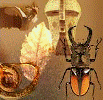Museum, University of Nebraska State
Date of this Version
11-2014
Citation
Novick et al.: Depicting the tree of life in museums: guiding principles from psychological research. Evolution: Education and Outreach 2014 7:25. doi:10.1186/s12052-014-0025-0
Abstract
The Tree of Life is revolutionizing our understanding of life on Earth, and, accordingly, evolutionary trees are increasingly important parts of exhibits on biodiversity and evolution. The authors argue that in using these trees to effectively communicate evolutionary principles, museums need to take into account research results from cognitive, developmental, and educational psychology while maintaining a focus on visitor engagement and enjoyment. Six guiding principles for depicting evolutionary trees in museum exhibits distilled from this research literature were used to evaluate five current or recent museum trees. One of the trees was then redesigned in light of the research while preserving the exhibit’s original learning goals. By attending both to traditional factors that influence museum exhibit design and to psychological research on how people understand diagrams in general and Tree of Life graphics in particular, museums can play a key role in fostering 21st century scientific literacy.



Comments
© 2014 Novick et al.; licensee Springer. This is an Open Access article distributed under the terms of the Creative Commons Attribution License. Used by permission.